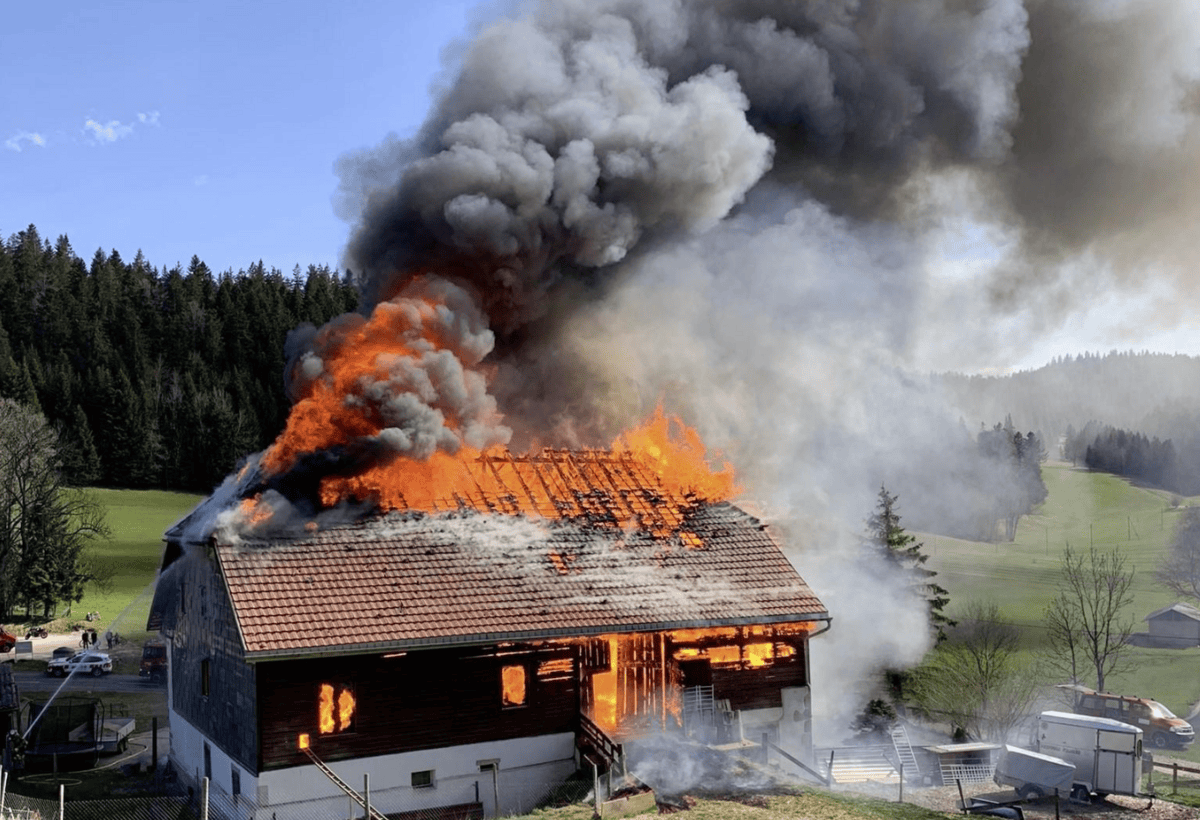What first responders should and can do
It often sounds a bit trite to say, "In an emergency, the most important thing is to stay calm and take the right steps quickly!" Unfortunately, practice still proves a different picture.

The main reasons why the consequences of accidents, fires and disasters are often more severe than they should be are often the panicked reactions of untrained helpers. In order to act correctly at the right time in a dangerous situation, it is important to think through possible scenarios in advance and to learn and practice the right behavior. This applies to both firefighting and evacuation measures.
This is especially true for special buildings and objects with a high fire risk.
In principle, of course, this also applies if the legislator requires these measures in other buildings in which there is usually potential for danger.
Therefore, preventive and operational measures for hazard prevention must be taken for these areas. They require a precisely clarified procedural algorithm for the first responders (fire protection and evacuation forces).
It is clearly stipulated in legal foundations that the employer must designate those employees who should and must assume tasks for hazard prevention. In this context, training is also to be regarded as an immanent component.
Compendium
Practice shows, however, that this clear legal standard is still given too little attention. From experience, it can be estimated that especially those responsible for fire, disaster and hazard protection are not fully aware of their responsibility, and therefore do not yet make sufficient use of training measures offered, for example, and do not train their first-aiders in a property-related and hazard-specific manner. For this reason, a scientifically based compendium is prepared and recommended for use in the training or initial and further training of fire protection assistants and evacuation forces.
These topics, which have been tested several times in practice, include the essential tasks, rights and duties of the persons in charge and the fire protection assistants and evacuation personnel. In the training measures carried out so far, it has also proved successful that common sets of topics are prepared for fire protection assistants and evacuation forces (often referred to as first aiders).
Managers at the "on-site level," such as division managers, home managers, stewards, foremen, shift supervisors, and others, can also benefit to refresh their knowledge, as they ultimately bear full responsibility for the deployment of fire protection assistants and evacuation forces in the event of a hazard.
Focus topics
The compendium begins with theoretical explanations of the legal basis, responsibilities, and first aid, continues with instructions for practical training in hazard prevention, and ends with instructions for fire protection inspections in rooms and facilities with a special focus on firefighting measures, evacuation routes and exits, critical areas, weak points, and errors.
Legal basis
The legal provisions - both in Germany and Switzerland - define the responsibilities for the employer as well as for the employees. The Occupational Health and Safety Act is regarded as the "basic law of occupational health and safety". It contains important statements for the implementation of fire protection and evacuation measures. The law serves to ensure and improve health protection (prevention).
Definitions
The definitions are intended to explain the meaning of important terms and to prepare them as a tool for daily use. Only if the same language is spoken can joint action be achieved in hazard prevention.
- Fire hazard: Fire hazard is the possibility of fire starting and the possibility of fire causing damage to the health of people and animals, damage to the environment and/or damage to property (permanently existing condition).
- Fire hazard: The term refers only to the acute state of danger.
- Fire safetyFire safety is the condition of products (including plants, structures, building equipment and technological processes) that prevents the development and spread of fire.
- Evacuation of people: Evacuation of people is the timely, planned departure of people from a structure or part of a structure at risk in order to reach safety.
- Evacuation, rescue (according to ISO 8421-6.6.6): Orderly movement of people to a safe place (in case of fire or other emergency).
- Clearance time (according to ISO 8421-6.6.18): Time required for all users of a building or parts of a building to reach an exit to the outside after an evacuation signal has been emitted.
- Evacuation routes: Are, for example, corridors, corridors, staircases that lead to the evacuation exits and ensure safe movement of people or flows of people within a certain time.
- Evacuation exit (according to MBO): An exit that leads directly to the outdoors, a safety stairwell, or a safe area (e.g., fire compartment).
- Evacuation time: Time period from fire outbreak to reaching an area safe for people or the outdoors.

Responsibilities of company management with regard to operational fire protection
The prevention and suppression of fires and explosions is considered a joint task for all employees in the company. On this basis, managers shall regulate the tasks necessary to ensure fire and disaster prevention, the organizational measures and the technical provisions as well as the behavioral requirements for employees in work and plant regulations, in fire prevention regulations, disaster prevention plans, work instructions or in other appropriate forms.
Managers must ensure that employees are familiarized with all measures and documents necessary for them to ensure fire and disaster protection in the company. These include, among others, the fire protection regulations, the Occupational Health and Safety Act, the Workplace Ordinance, the Major Accidents Ordinance or the accident prevention regulations.
The responsibility of managers for ensuring fire and disaster protection also extends to planning and provisioning, ensuring the constant functionality of facilities, equipment and other means of rapid
fire warning, fire detection and firefighting, and on securing forces for firefighting and disaster response. The same applies to the deployment and training of fire protection assistants and evacuation forces (first aiders). To support them in solving fire protection tasks, the use of a fire protection officer is recommended, and for security, the use of a security officer.
Tasks, rights and duties of first aiders
Based on the fact that first responders in the field of fire safety do not have the responsibilities, duties and rights of a manager, but that they perform tasks on behalf of the entrepreneur, assisting the fire safety officer, they should be assigned the following basic control tasks:
- compliance with fire safety regulations in the assigned area of responsibility
- compliance with the smoking ban
- the existence and timeliness of the alarm and evacuation plans
- keeping evacuation routes and exits free (emergency exits)
- the proper condition of the electrotechnical installation (visual inspection) and the safe use of the electrical equipment
- the presence of the required signs
- the operational readiness of the fire extinguishing equipment and devices
- the proper storage of solid fuels and highly combustible materials
With regard to defensive fire protection and in support of the fire protection officer, or in areas with a low fire risk or in areas where no fire protection officer is assigned, first responders can and should carry out initial damage limitation or damage control measures. Their alerting must be organized and should be rehearsed regularly. With the up-
Only those employees who have the necessary expertise to recognize fire hazards in good time and can effectively enforce fire protection measures may be entrusted with the task of a first aider. The following are required as prerequisites:
- Comprehensive knowledge of the sources of danger in the area of responsibility
- Precise knowledge of the relevant fire protection and safety regulations and their application
- Basic knowledge of fast, effective firefighting and evacuation
- Sense of responsibility, physical and mental fitness
Of course need all Employees
- follow the instructions for fire prevention
- support by their behavior all measures for the prevention of fires and explosions
- quickly fight fires that have started
- comply with the rules of evacuation

Protection goals
The complex of preventive fire and hazard protection distinguishes between four protection goals which, although they establish an order of priority, e.g. fire prevention before prevention of fire spread, form a closed system in which all protection goals are to be considered of equal importance. In this context, it must be clarified which necessary measures must be observed and fulfilled by the persons in charge up to the first responders in order to recognize or determine, evaluate and derive necessary protection strategies for the fire origin, the fire spreading possibilities, necessary precautions for fire fighting as well as the necessary precautions for the protection against the hazards caused by fires.
Fire protection requirements
There are two principles regarding the requirements for fire protection in general:
1. "Fire protection requirements without Requirements for people", these are based exclusively on the application of technical measures (non-combustible building materials, fire protection constructions, fire alarm systems, extinguishing systems, etc.) or technical-organizational measures (relocation of work areas, room separation, relocation of apparatus, etc.).
2. "Fire protection requirements with Requirements for people", can be both technical measures (hand-held fire extinguishers, means of communication, reading of indicators, etc.) and organizational measures (qualifications, e.g. for welding and cutting work, etc.).
In addition, rules of conduct for people (smoking ban, inspections, readings, registrations, etc.) are also fundamentally important and unavoidable.

Causes of injuries in fires
Only around 5% of all injuries are caused by burns themselves. In contrast, smoke poisoning is the most common cause of injury, accounting for around 73%. Many people are not aware of the danger of smoke. Therefore, only two to three minutes are available for evacuation to leave the danger zone. The danger of an incipient fire is also often underestimated. Lack of knowledge about correct behavior
in fire protection, especially in case of fire.

Fire protection regulations according to DIN 14096
Fire safety regulations - part A
In the areas, especially in the vicinity of alarm devices or extinguishing equipment, the notices of the fire protection regulations Part A - according to DIN 14096-1 should be displayed clearly visible. These notices should show the basic rules for behavior in the event of fire and be a guide to follow the sequence of activities.
Areas of focus:
- Prevent fires
- Fire, open light and smoking prohibited
- Behavior in case of fire (form according to DIN 14096)
Fire safety regulations - Part B
Important rules of conduct for employees should be included here.
Areas of focus:
- Fire prevention - basic rules
- Prevention of fire and
- Smoke spread
- Fire and smoke protection doors
- Escape and rescue routes, emergency exits
- Signaling and extinguishing devices
- Fire alarm, smoke alarm, house alarm
- Sprinkler system - behavior
- Special extinguishing systems, e.g. company kitchens
- Fire blankets - application
- Telephone and fire alarm systems (e.g. extinguishing systems)
- Fire extinguishers - locations, application
- Wall hydrants - handling
- Behavior in the event of a fire (fire alarm, alarm signals and instructions Attempt to extinguish, move to safety, special rules of conduct for areas of responsibility).
Fire safety regulations - part C
Here, the responsibilities should be specifically defined for the individual functionaries (including the director, fire safety officer, department or division manager).
- Fire prevention measures (specifications for behavior, instructions for action, monitoring tasks, testing measures for fire protection technology, evacuation exercises, instruction, etc.).
- Alarm planning (fire alarm system - determine permanently staffed position, e.g. porter)
- Instruction of all employees in the available alarm options and definition of responsibilities for necessary actions

Behavior at the outbreak of a fire
If fires occur despite all safety measures, employees must immediately initiate fire-fighting measures. The following is therefore intended to provide some advice on the correct behavior in the event of a fire:
- If a fire breaks out, then in addition to the greatest caution, it is above all necessary to act quickly and deliberately.
- The fire department must be alerted or have the fire department alerted immediately.
- The alarm regulations must be observed. It is advisable to familiarize yourself with them before starting work.
- If the message is given to the district control center or to the control center of the professional fire department via telephone (emergency call 112), the greatest importance must be attached to an exact transmission of the message.
The following must be provided by the reporting party:
- Where is the fire (exact address, shortest route if necessary)?
- What is burning (e.g. laboratory, mixing plant)?
- Are people in danger (about number)?
- Who reports the fire (names)?
- From where is reported (telephone number, if necessary also apparatus number)?
After the alarm is sounded, the fire department is to be expected and briefed.









